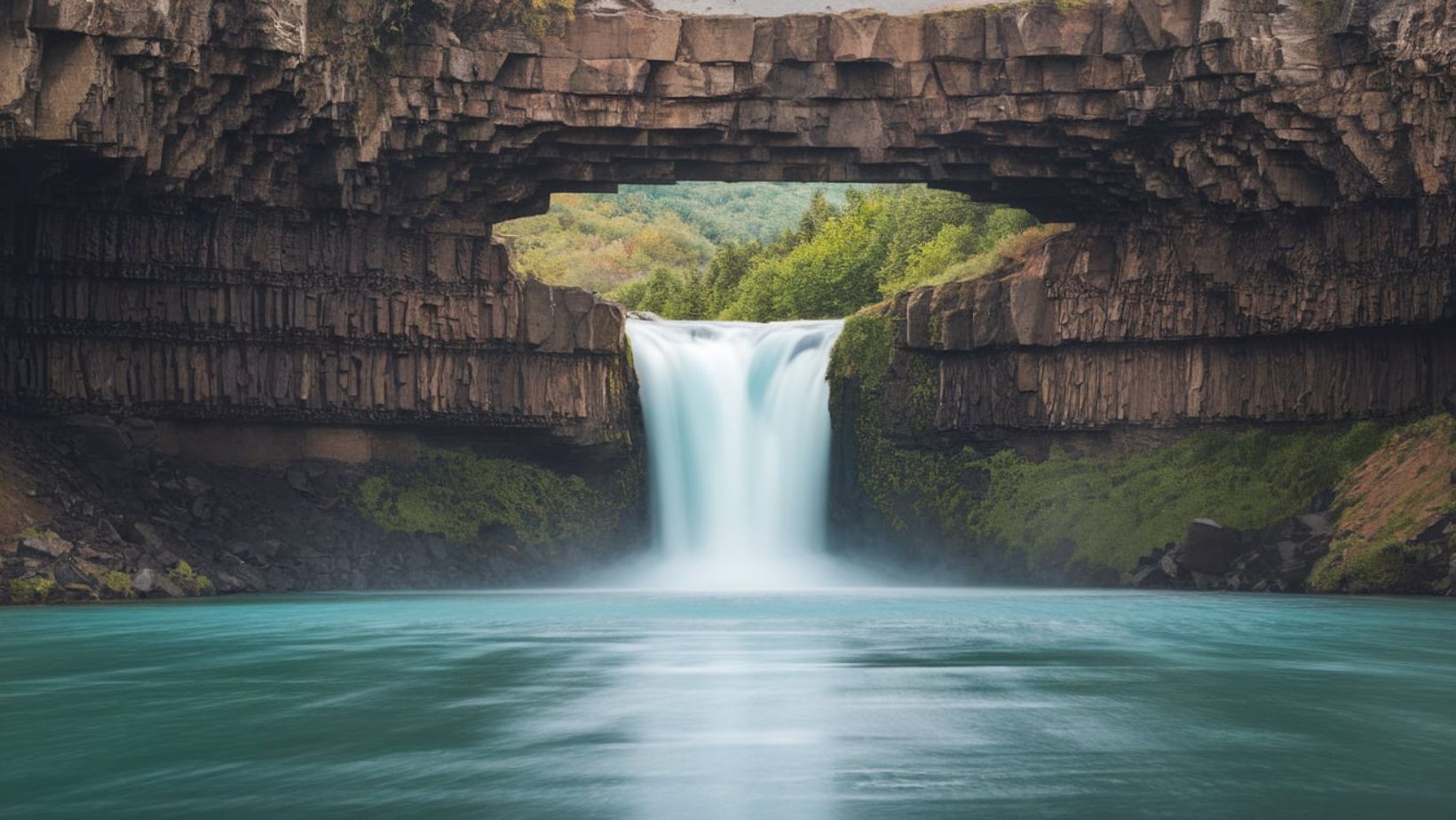What forces of nature carved this spectacular canyon during the greatest floods Earth has ever known? How did this magnificent waterfall survive as the last active cascade from the Ice Age? What prehistoric secrets lie buried in the layered basalt cliffs that frame this geological wonder? At Palouse Falls, where ancient history meets raw power, the story of Earth’s most dramatic geological events continues to unfold before our eyes.
Palouse Falls Stands as The Last Active Ice Age Waterfall
Plunging 198 feet through layers of ancient basalt, Palouse Falls represents the last active waterfall carved by the catastrophic Ice Age floods. Like Earth’s most impressive geological formations, these falls tell a story of unimaginable natural forces. The falls were created during the Great Missoula Floods, when ice dam breaches released up to 500 cubic miles of water, creating the most powerful floods in Earth’s known history.
Geological Layers Reveal Earths Dramatic History
The canyon walls surrounding Palouse Falls expose 16 million years of geological history. Similar to how other natural limestone formations capture time, each layer of columnar basalt tells a story of massive volcanic eruptions that covered the Pacific Northwest in molten rock. Recent geological surveys have identified over 300 distinct lava flows in the canyon walls, making it one of North America’s most complete geological records.
Paleontological Discoveries Rewrite Prehistoric Records
The area around Palouse Falls continues to yield significant paleontological discoveries. Like ancient cultural sites that reveal historical secrets, these fossil beds provide crucial insights into prehistoric life. Recent excavations have uncovered previously unknown species of Ice Age mammals, prehistoric plant fossils, and evidence of early human habitation dating back over 13,000 years.
State Symbol Status Recognizes Exceptional Significance
In 2014, Palouse Falls earned the distinction of becoming Washington State’s official waterfall, recognizing its unique geological and historical importance. This designation helped secure additional protections and resources for conservation efforts. The falls now serve as a symbol of the state’s commitment to preserving its natural heritage for future generations.
Seasonal Changes Transform Visitor Experience
Throughout the year, Palouse Falls displays dramatically different characteristics. Spring snowmelt creates thunderous flows that demonstrate the falls’ raw power, while summer brings more moderate flows that reveal intricate basalt formations. Winter often transforms the falls into a partially frozen sculpture, creating spectacular ice formations that attract photographers from around the world.
Research Reveals New Understanding of Ice Age Floods
Ongoing scientific research at Palouse Falls continues to reshape our understanding of Ice Age events. Advanced dating techniques and geological surveys provide new insights into the timing and magnitude of the Missoula Floods. Studies of erosion patterns in the canyon walls help scientists understand how such massive water flows shaped the landscape we see today.
Native American Heritage Adds Cultural Depth
For thousands of years, Native American tribes have considered Palouse Falls a sacred site. Traditional stories describe the creation of the falls and their significance in tribal culture. Archaeological evidence suggests the area served as an important gathering place for multiple tribes, who utilized the abundant salmon runs that once navigated the falls.
Modern Conservation Faces Unique Challenges
Preserving Palouse Falls requires addressing multiple conservation challenges. Erosion control measures protect both the falls and visitor safety, while habitat restoration projects support native plant and animal species. Water flow management ensures the falls maintain their natural character while meeting regional water needs.
Photography Opportunities Draw Global Interest
The falls’ dramatic setting creates extraordinary photography opportunities throughout the year. Sunrise and sunset light up the canyon walls in brilliant colors, while star trails over the falls attract night photographers. The surrounding plateau provides numerous vantage points for capturing the falls’ majesty in different conditions and seasons.
Educational Programs Share Geological Knowledge
Interpretive programs help visitors understand the falls’ geological significance. Educational displays explain the Missoula Floods and their role in shaping the Columbia Basin landscape. School groups regularly visit to study geology, paleontology, and natural history in this living laboratory of Earth’s processes.
Future Research Promises New Discoveries
Scientists continue to study Palouse Falls and its surroundings, expecting to uncover more secrets about Earth’s past. New technologies allow researchers to examine previously inaccessible areas of the canyon, while improved dating methods provide more accurate chronologies of geological events. Each discovery adds to our understanding of how catastrophic events shaped our planet’s surface.
